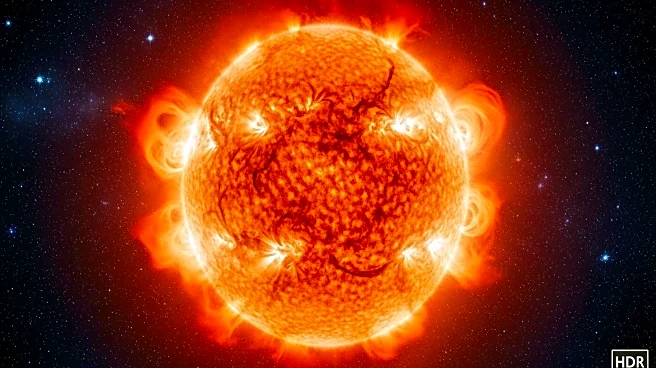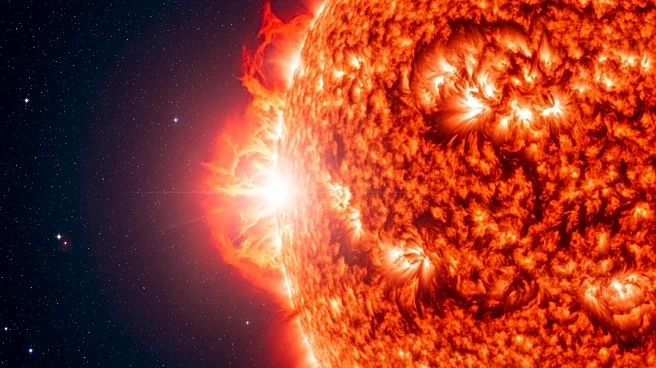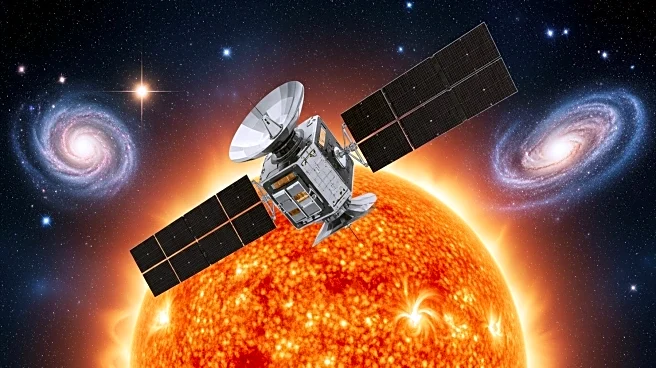What's Happening?
A recent study has found that solar flares, which are massive eruptions from the sun, are significantly hotter than scientists previously believed. These flares can be many times the size of Earth and pose risks to satellites and other space-based technologies. The study's findings suggest that the temperature of these solar events is higher than earlier estimates, prompting a reevaluation of their potential impact on space infrastructure and communication systems.
Why It's Important?
Understanding the true temperature of solar flares is critical for the protection of satellites and other space assets that are vital for communication, navigation, and weather forecasting. Higher temperatures could mean increased risks of damage to these technologies, which are essential for modern life. This research could lead to improved predictive models and protective measures, ensuring the resilience of space-based systems against solar activity. The findings also contribute to the broader scientific understanding of solar phenomena and their effects on the Earth's environment.
What's Next?
The scientific community is likely to conduct further research to confirm these findings and explore their implications for space weather forecasting. Satellite operators and space agencies may need to reassess their strategies for mitigating the effects of solar flares. This could involve developing more robust shielding technologies or adjusting operational protocols during periods of heightened solar activity. Ongoing monitoring and analysis will be crucial to adapting to these new insights and safeguarding critical infrastructure.











